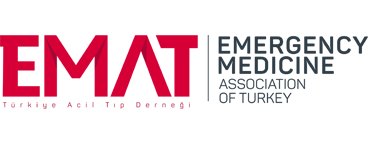Comparing the National Institutes of Health Stroke Scale Scores between emergency medicine physicians and neurologists for timely decision‑making for alteplase administration
Osman Tecir1 , Mustafa Çiçek2
, Mustafa Çiçek2 , Özgen Gönenç Çekiç2
, Özgen Gönenç Çekiç2 , Şenol Ardıç2
, Şenol Ardıç2 , Ramazan Akpınar3
, Ramazan Akpınar3 , Nuray Can Usta4
, Nuray Can Usta4 , Süleyman Türedi2
, Süleyman Türedi2
1Department of Emergency Medicine, Akcaabat Hackali Baba State Hospital, Trabzon, Türkiye
2Department of Emergency Medicine, Kanuni Education and Research Hospital, Trabzon, Türkiye
3Department of Neurology, Medical Park Karadeniz Hospital, Trabzon, Türkiye
4Department of Neurology, Kanuni Education and Research Hospital, Trabzon, Türkiye
Keywords: Emergency department, National Institutes of Health Stroke Scale, stroke
Abstract
OBJECTIVES: The National Institutes of Health Stroke Scale (NIHSS) is used to determine the severity of the disease and to make treatment decisions in ischemic stroke patients. However, the need for a neurologist to assess NIHSS before thrombolytic therapy may prolong the treatment process.
METHODS: This prospective, single center, observational, planned study included patients who presented to the emergency department in the first 24 h after the onset of symptoms and were diagnosed with ischemic stroke between September 2022 and June 2023. The NIHSS was evaluated by the emergency medicine physicians and neurologists who evaluated the patients in the emergency department, and the decisions on whether to administer thrombolytics and the time taken for this decision were recorded and compared.
RESULTS: A very high agreement was found when the total NIHSS scores of emergency medicine physicians and neurologists were compared (intraclass correlation coefficient = 0.947 [95% confidence interval 0.92–0.96]). Emergency medicine physicians and neurologists showed high agreement with thrombolytic therapy decisions. In patients given thrombolytic therapy, emergency medicine physicians made the decision earlier than neurologists, and there was a significant difference of 14 ± 12 min between the decisions of emergency physicians and those of neurologists.
CONCLUSIONS: There is high agreement between emergency medicine physicians and neurologists in the NIHSS evaluation and thrombolytic decisions for patients with acute ischemic stroke. According to our results, emergency medicine physicians can provide thrombolytic treatment in accordance with neurologists, thus shortening the time for thrombolytic treatment.
How to cite this article: Tecir O, Çiçek M, Çekiç ÖG, Ardıç Ş, Akpınar R, Usta NC, et al. Comparing the National Institutes of Health Stroke Scale Scores between emergency medicine physicians and neurologists for timely decision-making for alteplase administration. Turk J Emerg Med 2025;25:223-9.
The ethical approval of this study was authorized by the University of Health and Science, Trabzon Faculty of Medicine, Kanuni Training and Research Hospital Clinical Research Ethics Committee (Trabzon, Turkey) with decision number 2022/50 on September 12, 2022.
Osman Tecir: Conceptualization, methodology (lead), software (lead), investigation (lead), resources, writing – original draft (lead), writing – reviewing and editing (supporting). Mustafa Çiçek: Data curation, methodology (supporting), writing – review and editing (lead), supervision (lead). Özgen Gönenç Çekiç: Data collection (lead), visualization, investigation (equal), project administration. Şenol Ardıç: Data collection (supporting). Ramazan Akpınar: Software (supporting), reviewing. Nuray Can Usta: Software (supporting), formal analysis, validation. Süleyman Türedi: Writingreviewing and editing (supporting), supervision (supporting).
None declared.
None.

